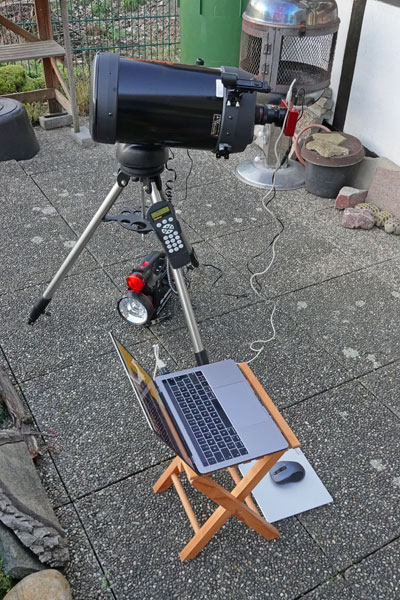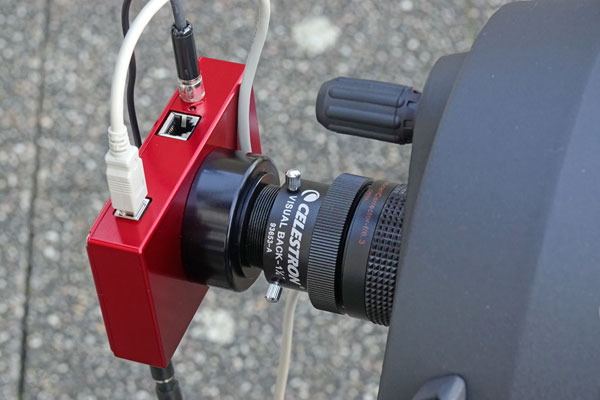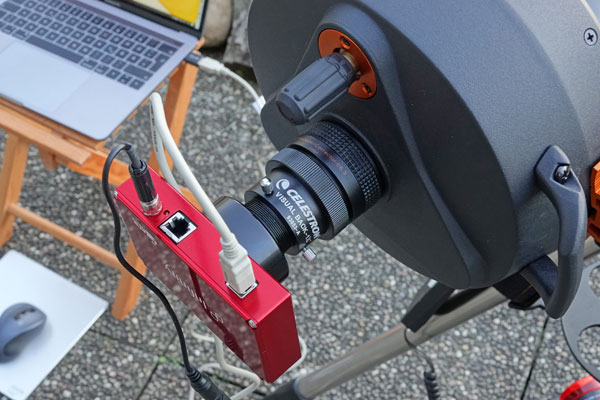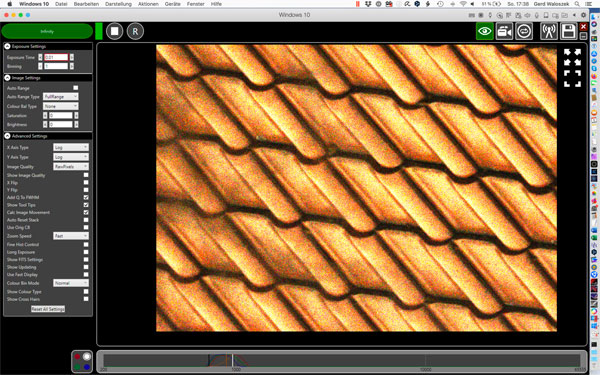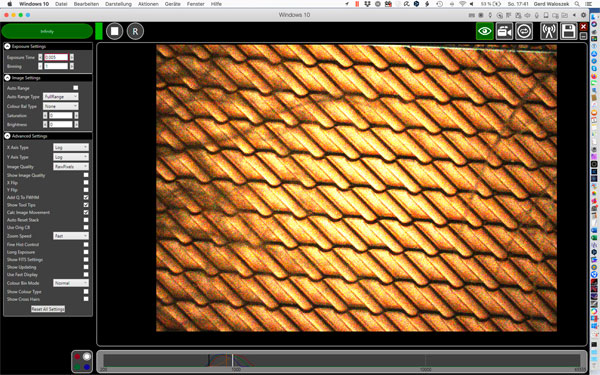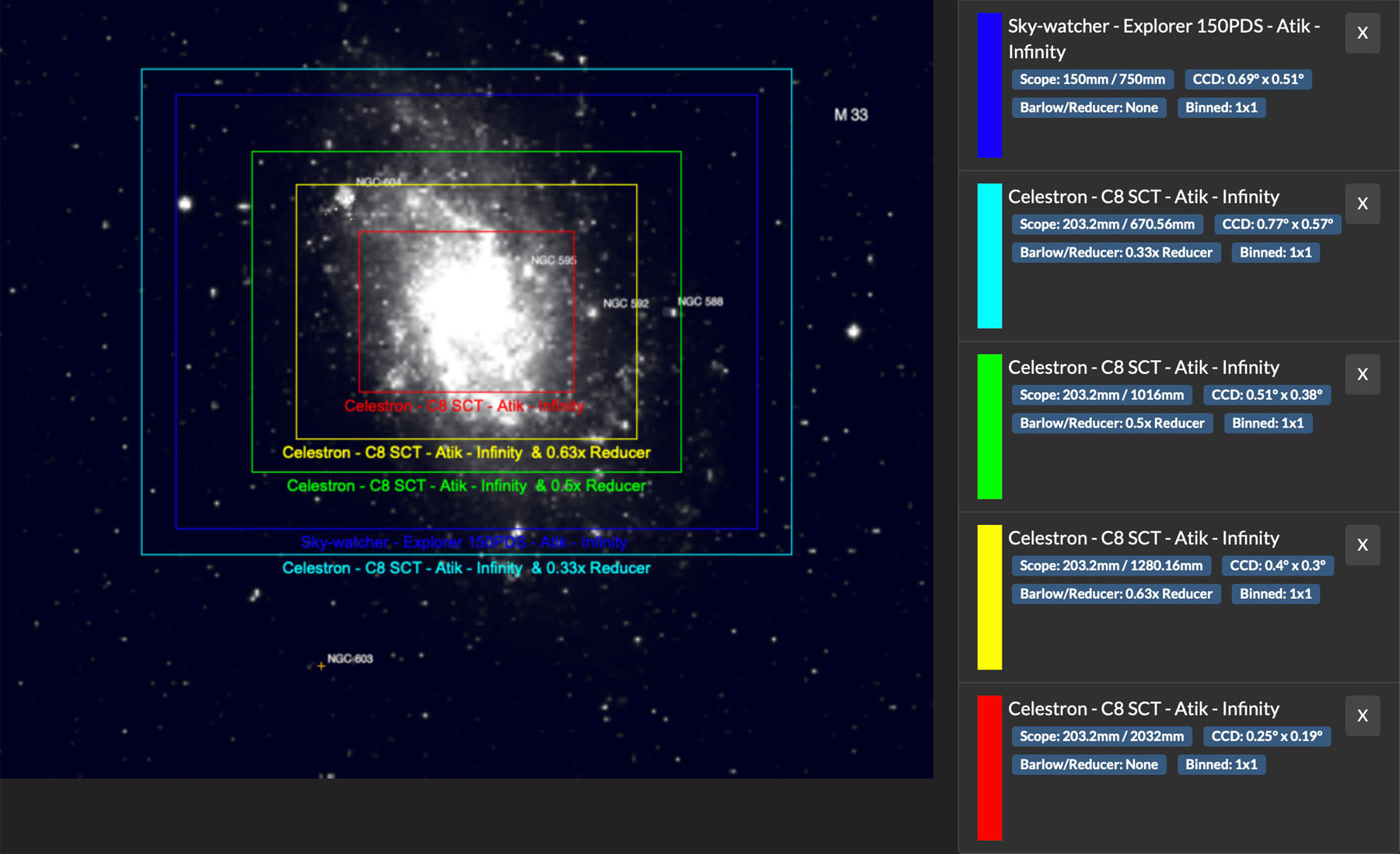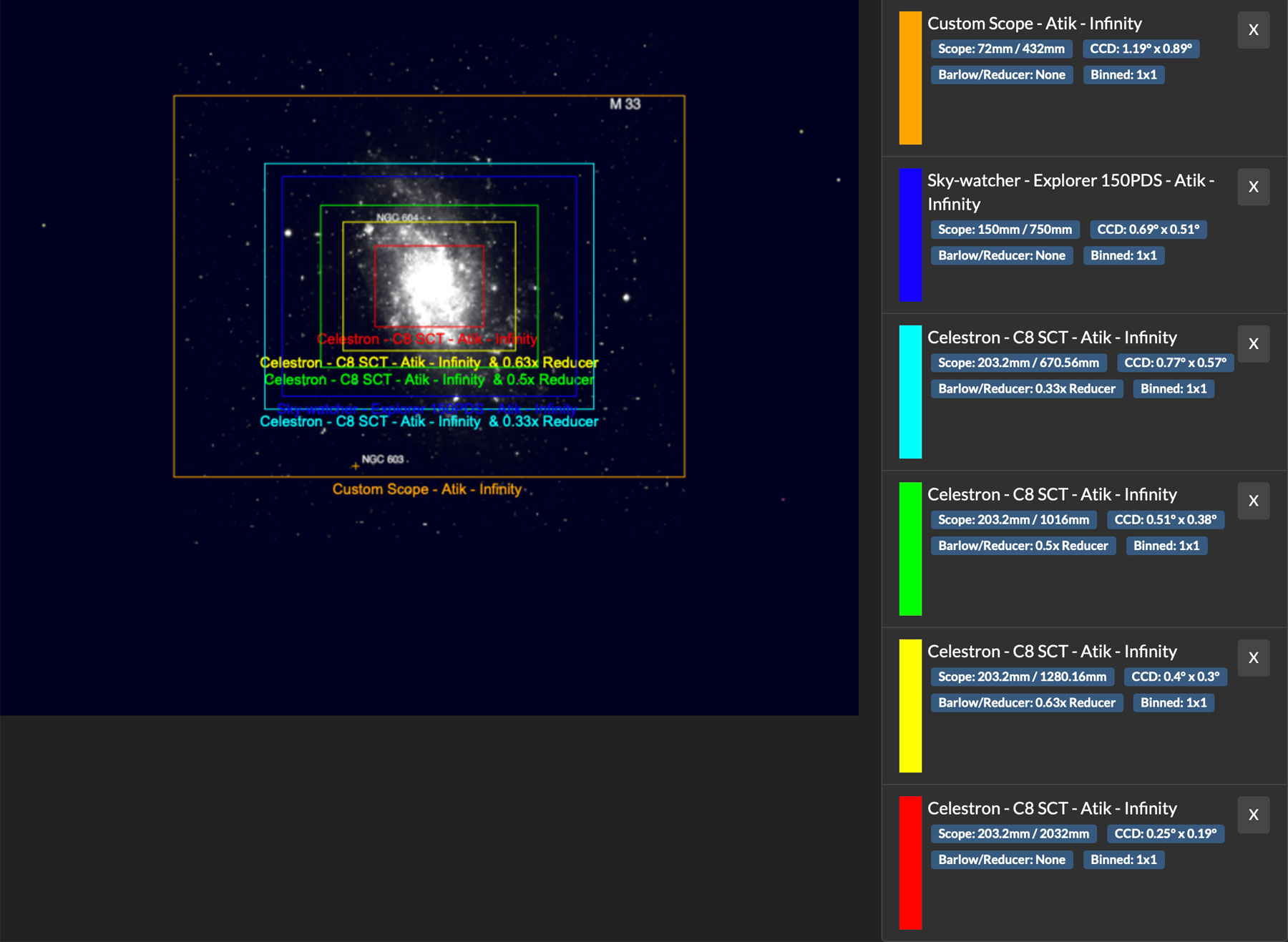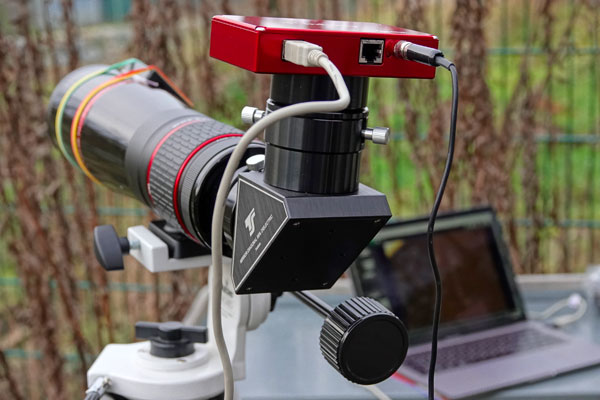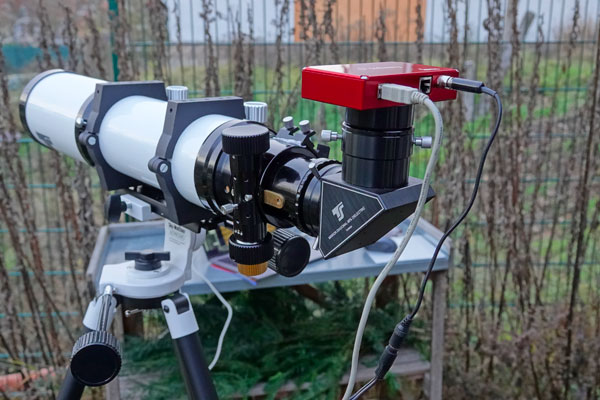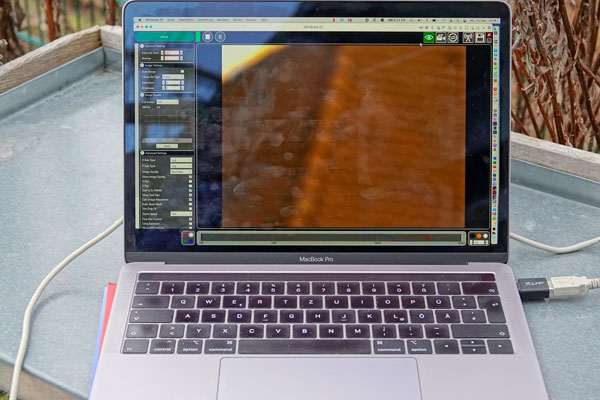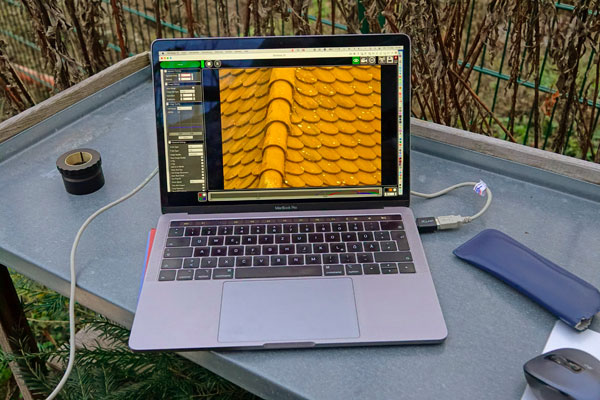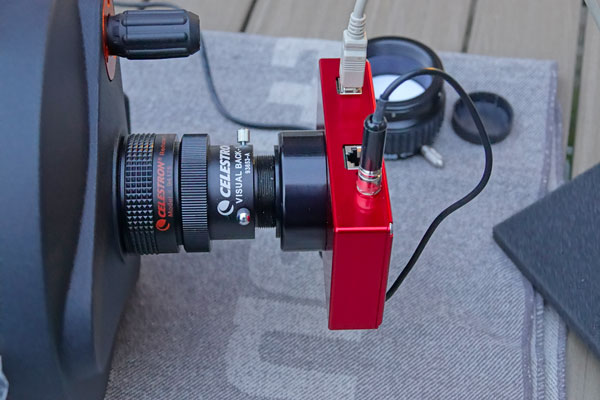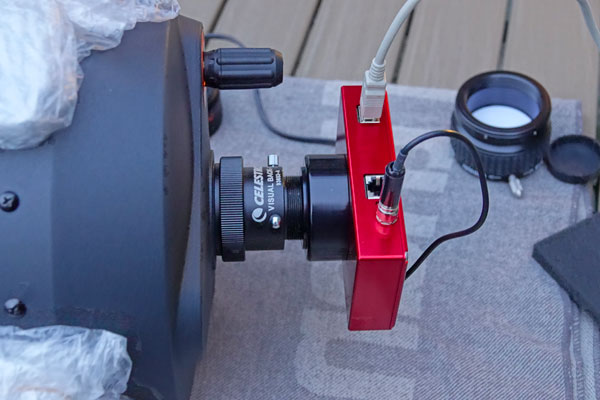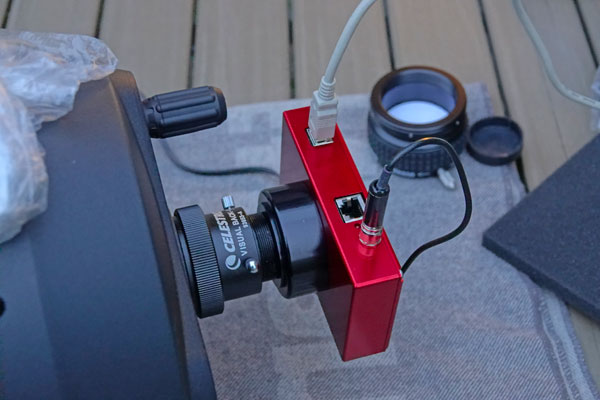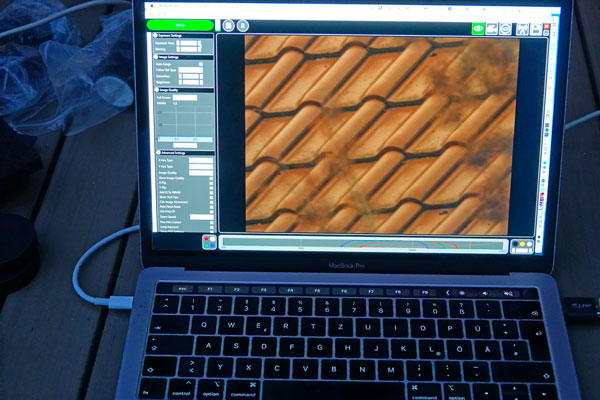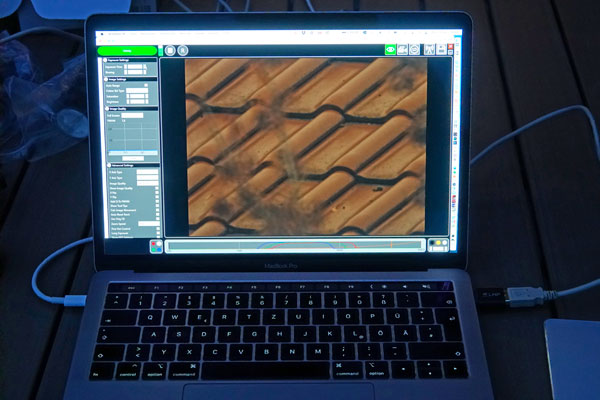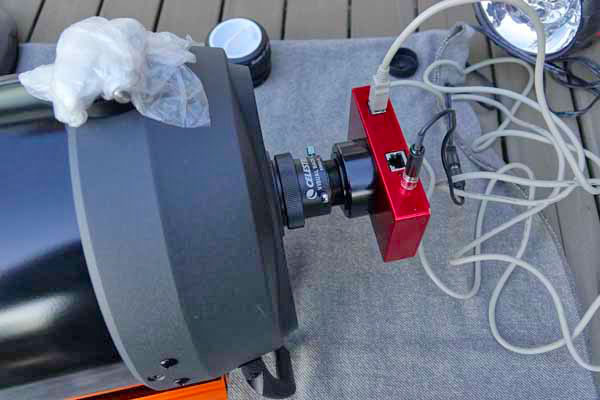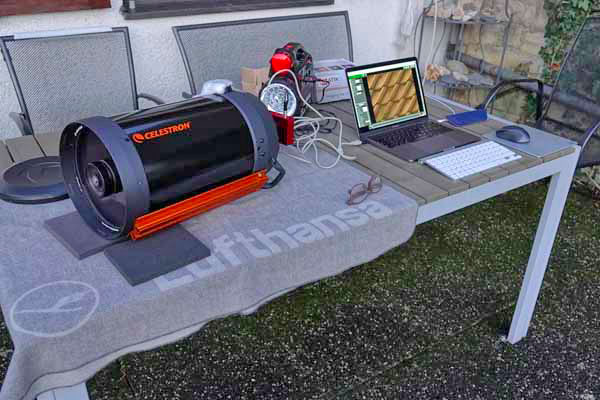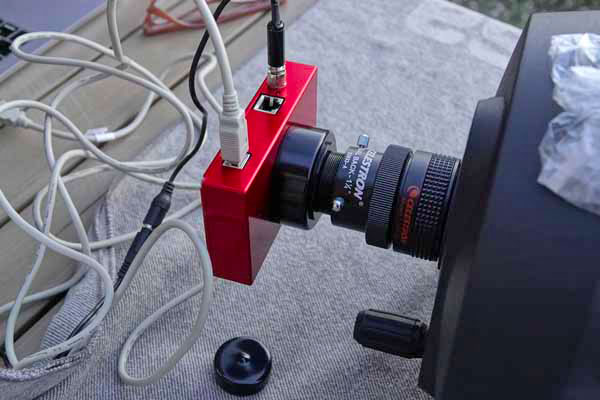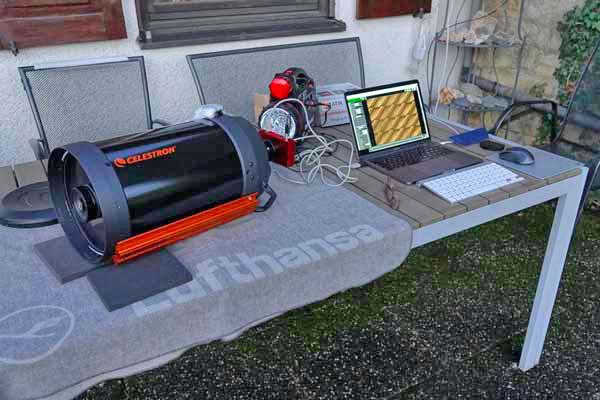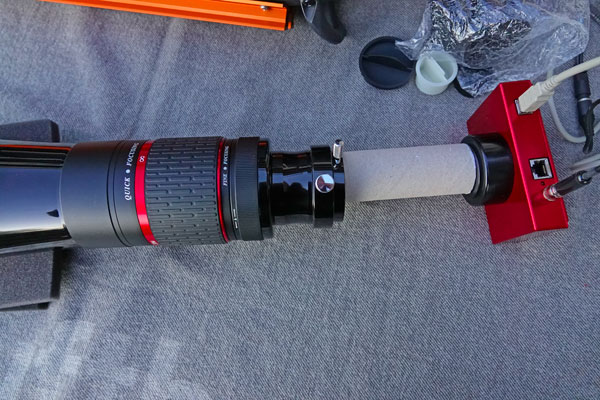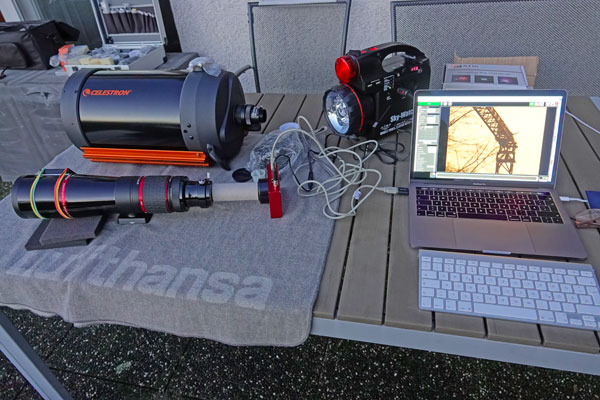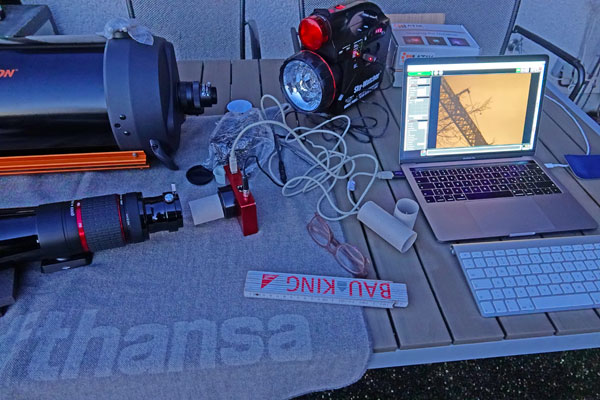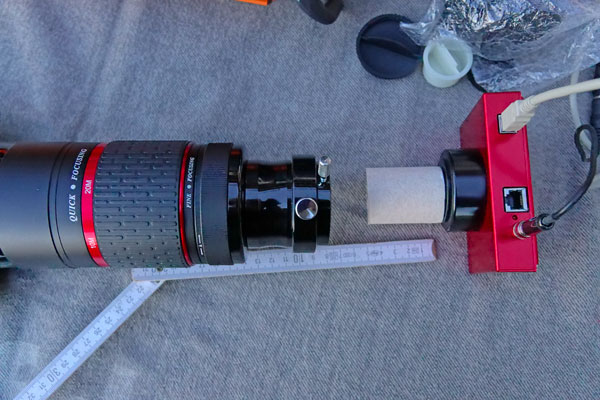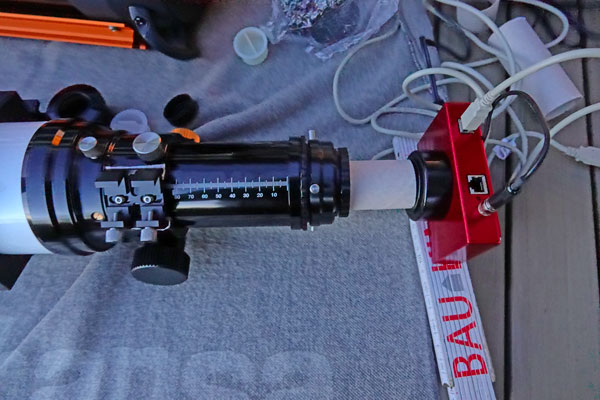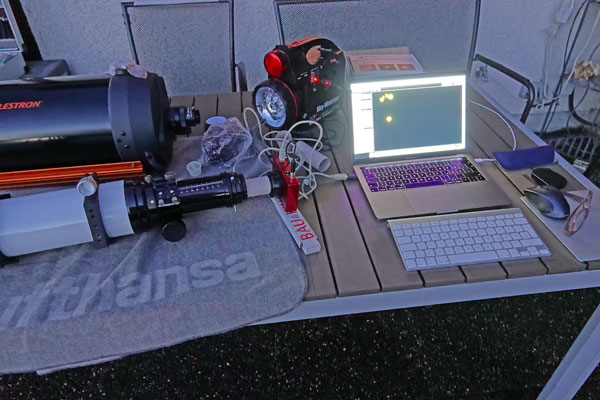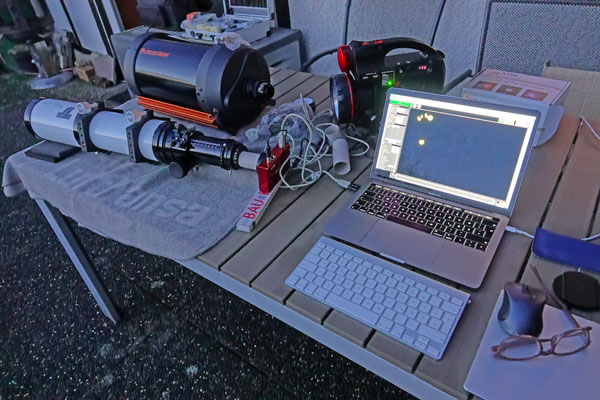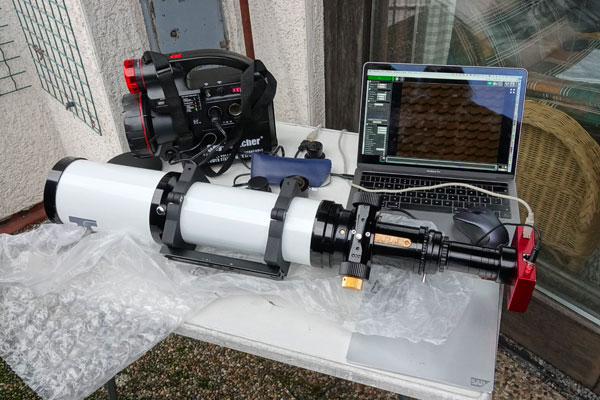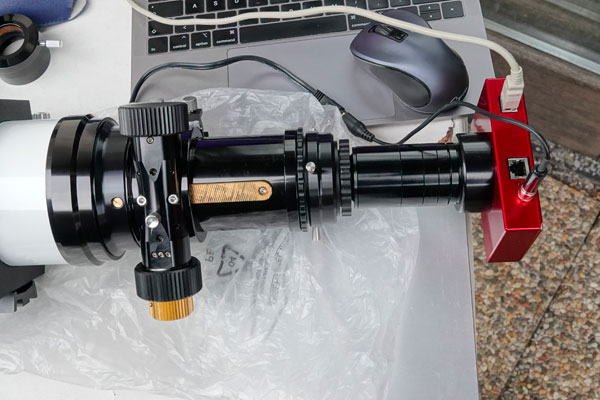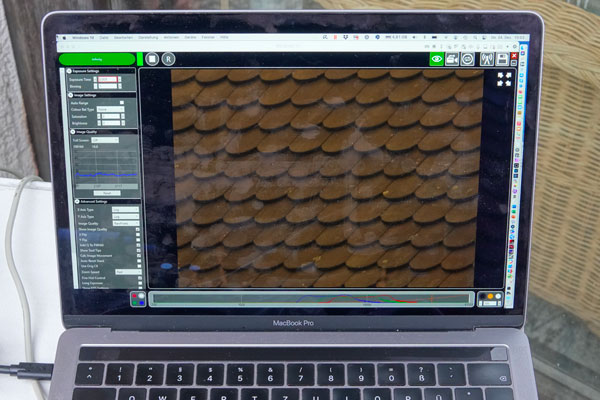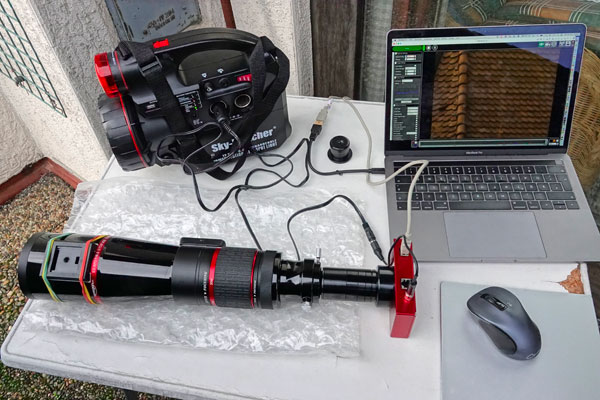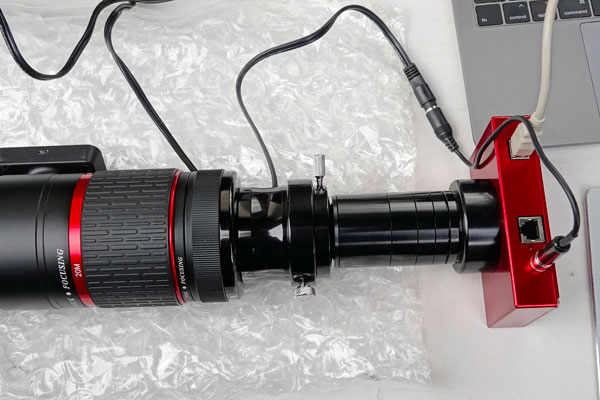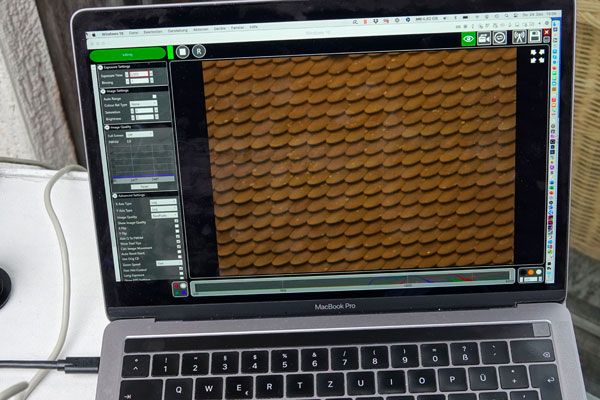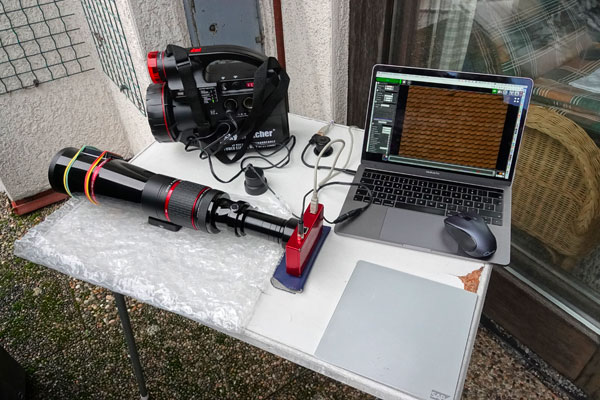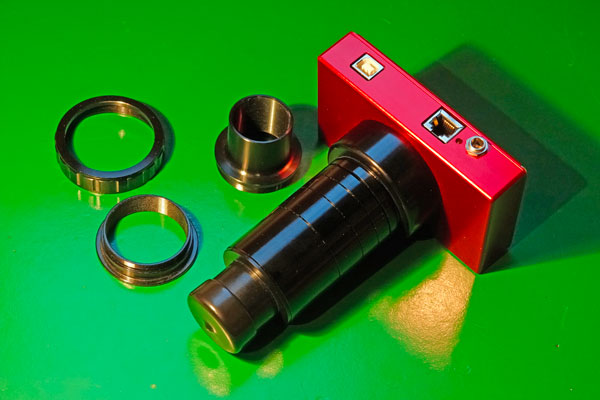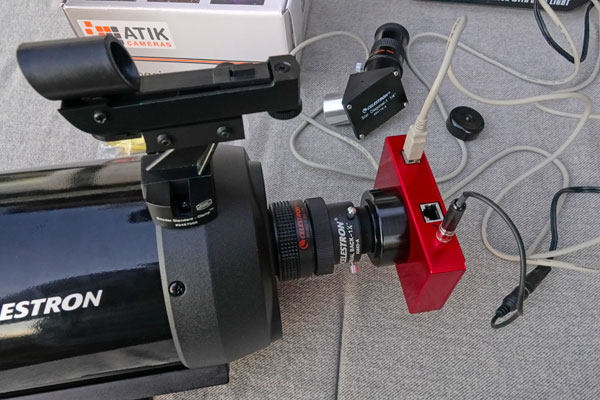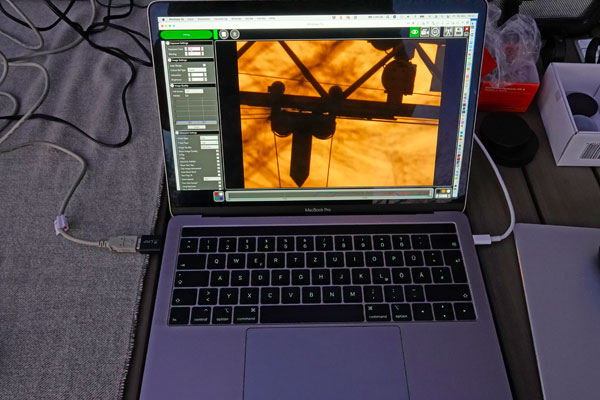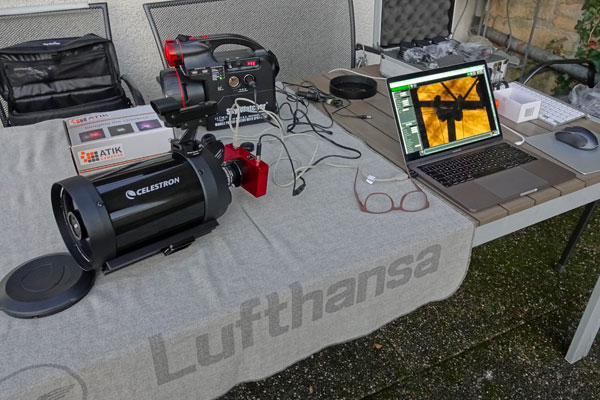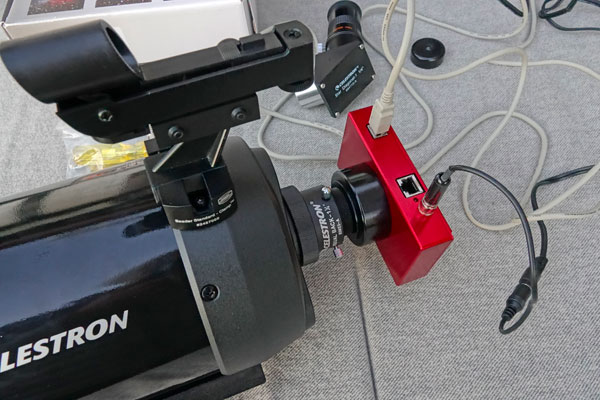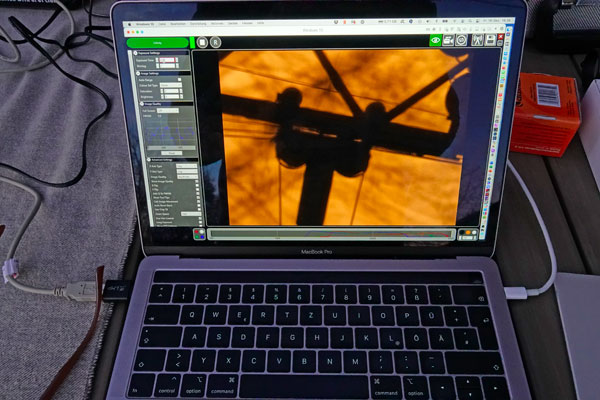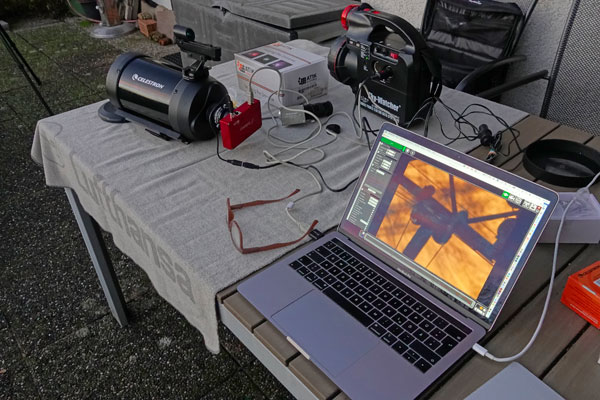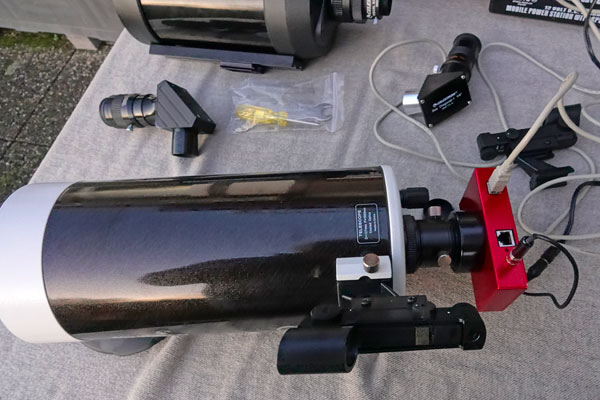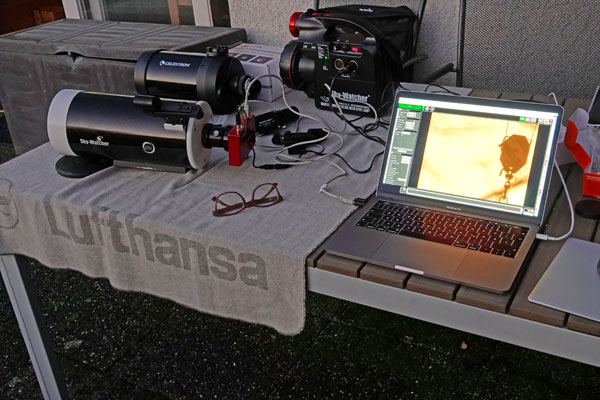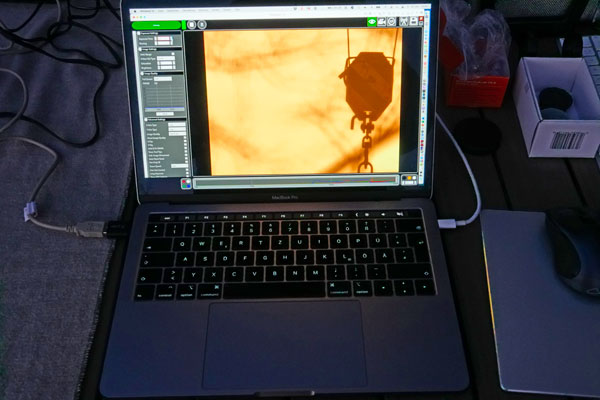Atik Infinity Colour Camera - Further Experiences (Dry Runs)
Introduction | Reactivating the Camera ("Dry Runs")... | New "Dry Runs" with Various Telescope Tubes | "Re-Dry Runs" with Various Telescope Tubes | "Dry Runs" with Further Tubes | Conclusions | Links
Archive
On this page, I compile some more experiences (from February 2020 until March 2021) that I have made with my Atik Infinity Colour* camera (received on November 25, 2017 as a used purchase). Primarily, I describe "dry runs" here, in which I tested, whether or not I can get into focus with the Atik Infinity camera at various telescope tubes.
I did also a couple of tests at night during this time (until March 2022), particularly first nightly tests at my current telescope tubes, which I describe on a separate page.
See also pages (Archive):
- Atik Infinity Colour Camera - Information
- Atik Infinity Colour Camera - First Experiences
- Atik Infinity Colour Camera - First Observation Sessions
- Atik Infinity Colour Camera - Further Experiences (Dry Runs) - Further Experiences (Nightly Tests)
- Atik Infinity Colour Camera - Software
- Atik Infinity Colour Camera - Field of View
- Atik Infinity Colour Camera - Photo Gallery
*) Usually, I would write "Color", because I try to use American English, but Atik is a company located in the UK, and therefore it's "Colour"...
Note: Over Christmas 2022, I sold my Atik Infinity camera (transferred on January 5, 2023). I therefore cannot report any further experiences with it here. |
Introduction
I did not use the Atik Infinity camera for two years and only unpacked it again in February 2020 after I received the eVscope. In the time between spring 2018 until then, I had observed mainly without GoTo. And in addition, the effort required for astrophotography with the Atik Infinity was too much for me.
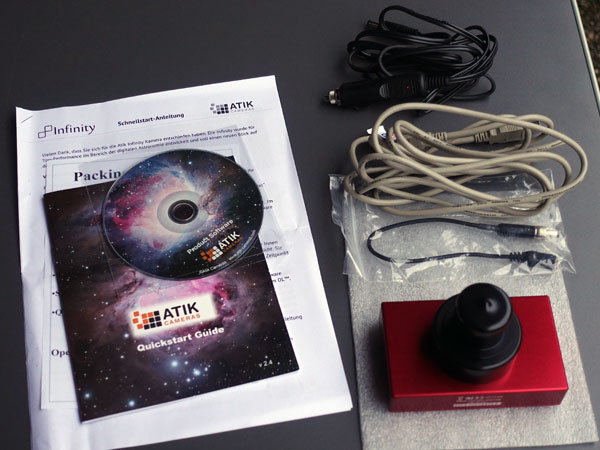 |
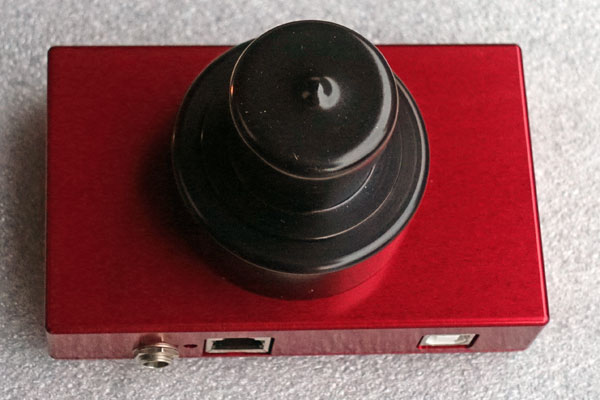 |
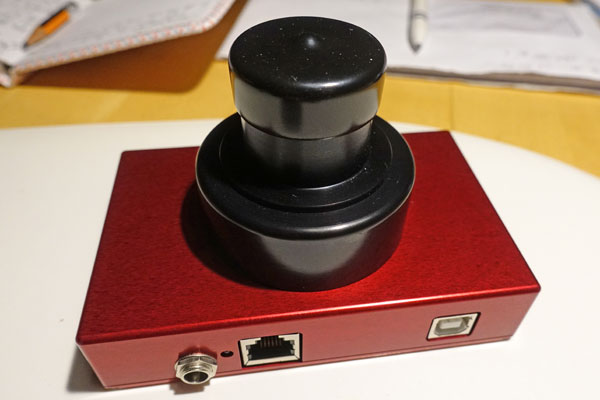 |
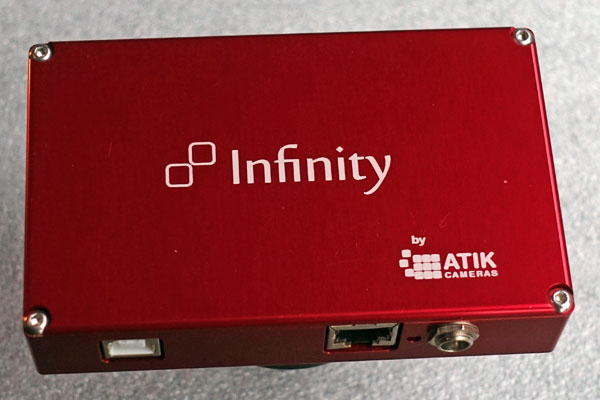 |
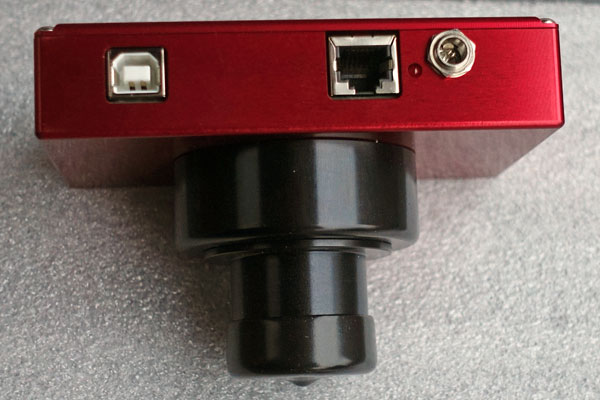 |
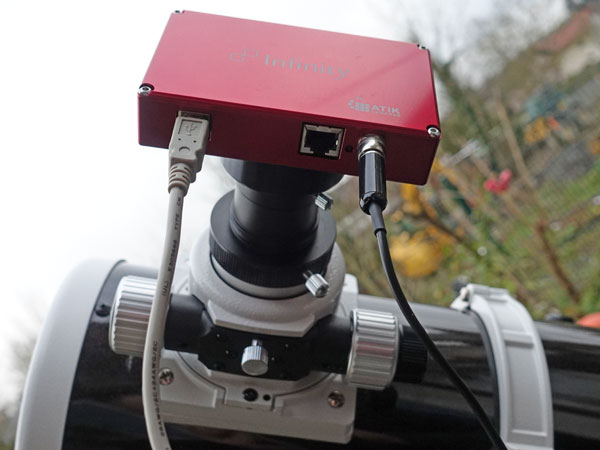 |
Photos: Just as a reminder how the Atik Infinity camera looks like...
At first, I only did "dry runs" to get the camera going again and test on new telescopes (PS 72/432 and C8 with focal reducer), whether the camera can produce a sharp image with them at all. Since I wanted to lend the camera to a starfriend in spring 2020, I made a night test with it using the C8 shortly before and tried out different focal reducers, but only in two configurations (see further below).
In December 2020, I did more "dry runs" with my new and older telescope tubes and the Atik Infinity. I summarized the quintessence of all "dry runs" at the end of this page. For many readers this should be quite sufficient and they can skip most of this page!
Reactivating the Camera ("Dry Runs")...
Since I updated the software for the Atik Infinity camera again and again, I had not looked at Atik's Website to see if there was a new version available. Unfortunately this was a mistake, as it turned out later...
First Attempt ...
On February 9, 2020, I "informally" set up my C8 with focal reducer (f/6.3) on the Star Discovery mount and connected the camera to the telescope on the one hand and to the computer on the other. Actually I wanted to test with targets in daylight, whether the camera with the focal reducer would come into focus and if so, under which conditions. On the new laptop, which only has USB-C ports, adapters for the USB cable were needed. Initially, when I used a plug-type USB-A-to-USB-C adapter, the camera was not recognized at all. When I switched to a "mini dock", the camera was finally recognized. In general, detecting the camera is always a problem, because I run Windows on a MacBook using Parallel Desktop.
The camera was detected with the mini dock, but in Finder and Video mode, it only ran for just one image (nothing was displayed) and then stopped running until I restarted Infinity software. Attempts with the new software called Dusk under Windows and MacOS did not lead to anything - this program is unusable at least for me...
I took a few more pictures to capture the principle of the setup, but that was all I was able to do.
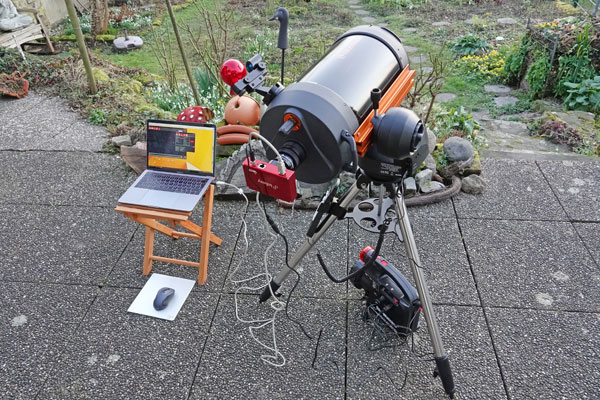 |
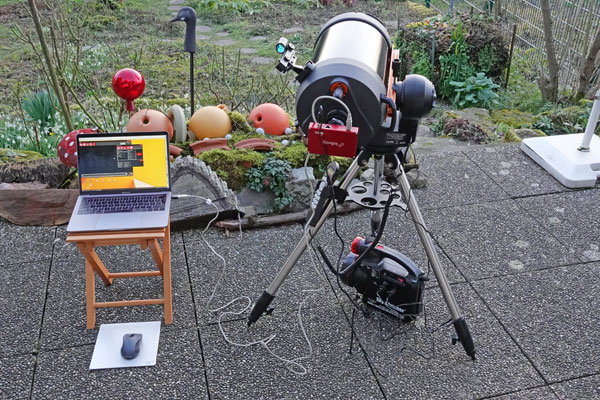 |
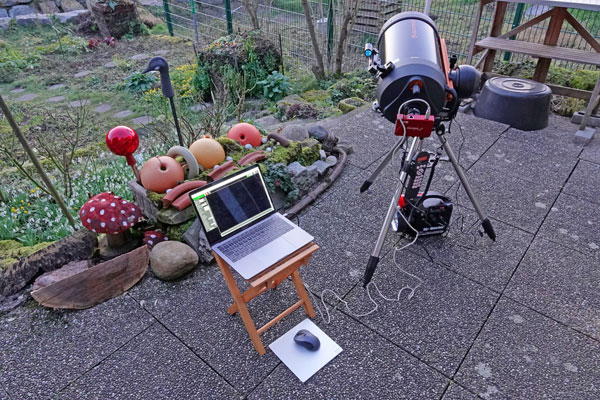 |
|
Atik Infinity connected via f/6.3 reducer/corrector and 1,25" visual back to C8 (worked only with additional zenith mirror at first) |
Ditto |
Second Attempt ...
I continued the next day, but for simplicity's sake with the PS 72/432 refractor on the AZ-Pronto mount. First, I made the same experiences! I then searched the Internet to find out whether the issue was known. But there only other issues were discussed, and I did not get any further. In between, I also visited the Atik Website without finding anything out. Finally, I reached for the last straw, namely reinstalling the software. The download page advised to uninstall the old version if you still have a version below version 5, but I was already at version 5. Nevertheless, I decided to uninstall the old software. This did not work at my first go, but it worked out eventually. Even when installing the newest software, it was just three days old, there were some minor problems, but I managed to overcome them. Then I started the version of the application, and lo and behold, the camera connected and worked again! I was relieved! The camera even worked with the USB-A to USB-C adapter and of course with the mini dock. If only I had installed the new software right away! Later on, I had some problems with recognizing the camera, but this is just, see above, due to my special computer configuration. Now it was time for the dry test with the PS 72/432!
PS 72/432
To make a long story short: the Atik Infinity came into focus on the Omegon PS 72/432 refractor only with the Omegon Amici prism (2" to 1.25"), neither "without anything" nor with the 2" zenith mirror from Omegon. I found the same behavior when using a 2 x Explore Scientific focal extender, which does not seem to change the length of the light path. The target was not at infinity, but far away. So I assume that I can replicate these results for targets in the sky. For the field of view with the PS 72/432, see below.
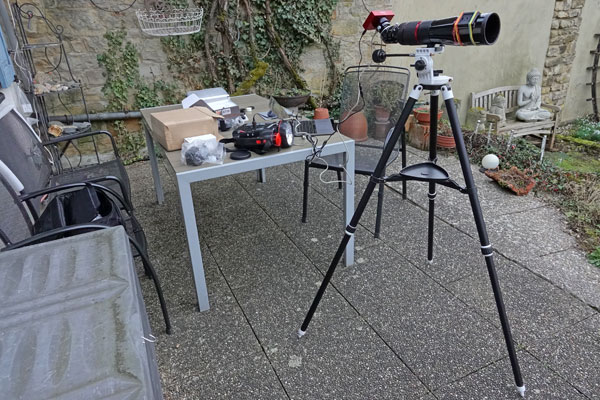 |
 |
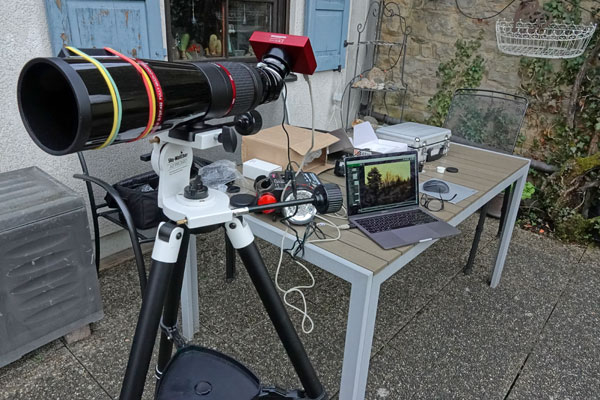 |
C8 with Focal Reducer(s)
Although it was already getting dark, I made a "quick test" with my Celestron C8. For this, I simply put it on a blanket on the table. First I tried the Celestron f/6.3 reducer/corrector alone, later I also tried a 2 x Reducer from TS Optics, which I screwed into the eyepiece socket of the camera (the extension tube for it did not work). The camera only came into focus with the reducer/corrector when I used the 1.25" zenith mirror from Celestron. This was also the case when I added the TS reducer - and in this case it worked even without the zenith mirror. The target was not at infinity, but far away. So I assume that I can replicate these results with targets in the sky.
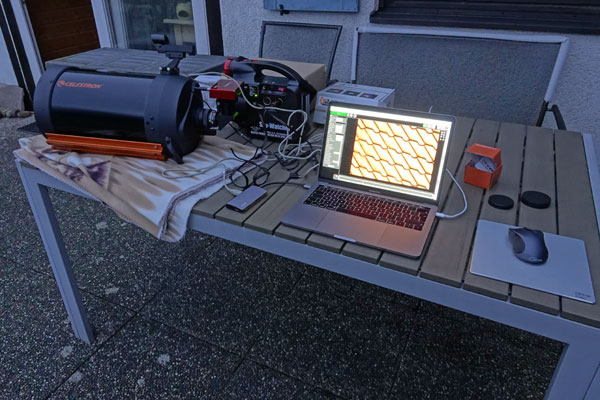 |
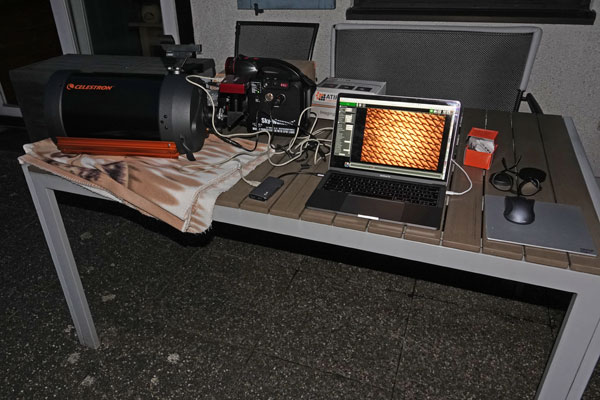 |
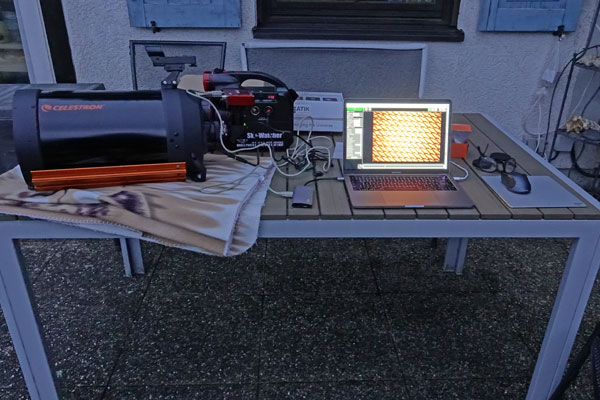 |
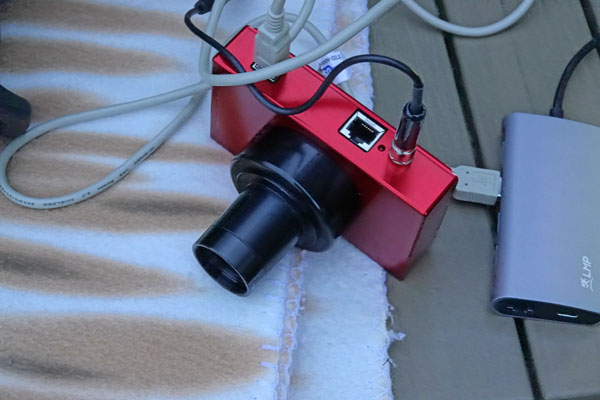 |
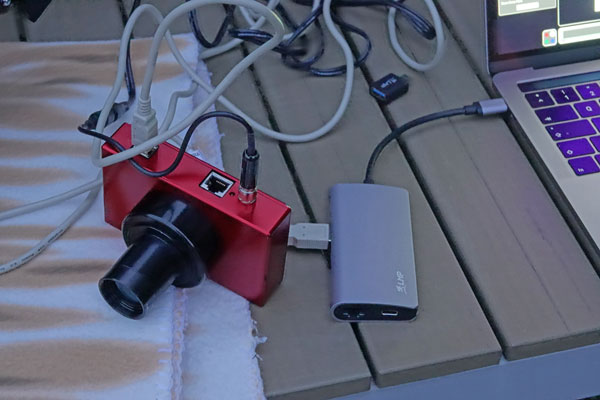 |
|
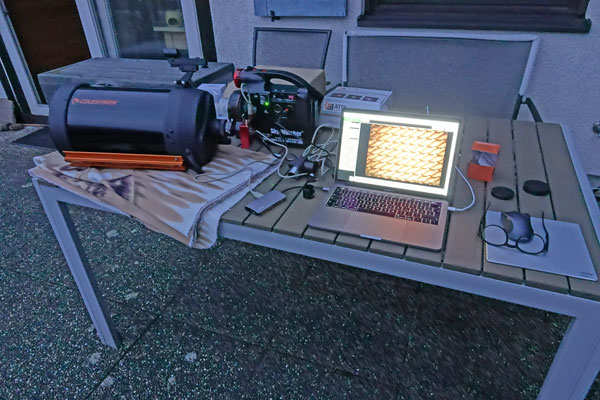 |
With f/6.3 reducer/corrector |
With f/6.3 reducer/corrector and 2x reducer |
Intermediate Results - Focus or not?
- PS 72/432 : I can use the Atik Infinity camera on the PS 72/432 only if I use the corresponding Amici prism (2" to 1.25"). It is a matter of controversy among amateur astronomers, whether such prisms can be used at night, or not... Maybe, I will be able to find other possibilities (e.g. using a 1.25" zenith prism, see below).
- C8: I can also report that I get into focus with my C8 when I use
the f/6.3 reducer/corrector from Celestron and possibly also the TS reducer
(I did not test the TS reducer alone). In the first case, the 1.25" zenith
mirror from Celestron is needed, in the second case the camera works with
and without it.
I did not test whether the Atik Infinity works at the C8 without a reducer. Since a star friend got this working, it should work with my configuration as well (see below). - SM127: Not tested this time, but already successfully tested in 2018 (with TS reducer which I no longer own).
- TLAPO1027: Not tested, because purchased later (in July).
Note: See further down for more current focus tests!
Field of View (C8)
Simple measurements revealed that the field of view with the 2 x reducer actually doubles for the C8. The following graphic (calculated with astronomy.tools) shows the fields of view for various conditions (with Explorer 150PDS for comparison purposes):
And here including the PS 72/432:
Note: On March 15, 2020 (on the nex day, I wanted to lend the camera to a starfriend for some time), I made a first "night test" with the Atik Infinity camera at the Celestron C8 (see here).
New "Dry Runs" with Various Telescope Tubes
On December 14, 2020, I repeated the "dry runs" from February during the day. Again, the question was, whether I would be able to get into focus with the Atik Infinity camera at my current telescope tubes. On the one hand, the first test was not complete, on the other hand, a new telescope tube, the TLAPO1027, was missing in the first test, and finally I had sold my 0.5 x reducer in the meantime. The two refractors PS72/432 and TLAPO1027 took part in the new test, as well as as well as the C8 under simplified conditions. I had mounted the two refractors on the AZ Pronto mount, whereas I just put the C8 on a table and put a blanket under it. This time, I tested the refractor tubes also with 1.25" accessories, the C8 only with 1.25" accessories.
For the refractors, I tested the following conditions:
- without zenith mirror/Amici prism
- with 1.25" zenith mirror/Amici prism: Lacerta and Celestron zenith mirrors, Baader Amici prism
- with 2"-Zenit mirror/Amici prism: Omegon and TS-Optics Zenit mirrors, Omegon 2" Amici prism with 1.25" output
I tested the C8 only under the "simplest" conditions:
- With 1.25" visual back
- With 1.25" visual back and f/6.3 reducer/corrector
In all tests, I pointed the camera at the roof of a house standing a bit further away. I focused and also checked whether there was "room" in both focusing directions. But due to time constraints, I did not pay attention to the very best sharpness.
Results
Successful combinations are shown in italics.
Note: 1.25" Omegon reducer = 2" to 1.25" adapter (not a focal length reducer!)
PS72/432
- With 1.25" Omegon reducer, without everything: out of focus (light path too short)*.
- With 1.25" Omegon reducer, 1.25" Amici prism: sharp at infinity (just before infinity)
- With 1.25" Omegon reducer, 1.25" Lacerta zenith mirror: sharp at infinity (more "room" in front of infinity)
- With 1.25" Omegon reducer, 1.25 Celestron zenith mirror: sharp at infinity (just before 10 m, even more "room"; locking screws uncomfortable)
- With 2"-to-1.25" Omegon Amici prism: sharp between infinity and 20 m
- With 2" Omegon zenith mirror: out of focus (light path too long)
- With 2" TS-Optics zenith mirror: out of focus (light path too long, slightly less than with the Omegon zenith mirror)
*) With the help of an extension tube, it might be possible to come into focus without a zenith spire/ami-prism at all. >> This is indeed the case, see further down!
Here, the Lacerta zenith mirror recommends itself, because it is dielectric.
TLAPO1027
- With 1.25" reducer, without everything: out of focus (light path too short)*.
- With 1.25"-Omegon reducer, 1.25" Amici prism: sharp >> approx. 35 on scale
- With 1.25"-Omegon reducer, 1.25" Lacerta zenith mirror: >> good 40 on scale
- With 1.25"-Omegon reducer, 1.25" Celestron zenith mirror: >> good 70 on scale (locking screws uncomfortable)
- With 2"-to-1.25" Omegon Amici prism: sharp >> about 45 on scale
- With 2" Omegon zenith mirror: sharp >> approx. 25 on scale
- With 2" TS-Optics zenith mirror: sharp >> approx. 35 on scale
*) With the help of an extension tube, it might be possible to come into focus without a zenith mirror/amici prism at all. >> This is indeed the case, see further down!
The TLAPO1027 proved to be more trouble free than the PS 72/432 in terms of sharpness. I suspect that 2" zenith mirrors give no advantage on a camera with a 1.25" mount, so I would also use the Lacerta zenith mirror.
C8
- 1.25" visual back: works, sharp
- 1.25" visual back + f/6.3 reducer/corrector: works, sharp
For a camera with a 1.25" mount, these two options are the simplest solutions! I cannot confirm the result of the previous test, which showed that a zenith mirror is needed to get into focus with the f/6.3 reducer/corrector.
Photos for Illustration (Selection)
|
PS 72/432 with 1.25" zenith mirror |
PS 72/432 with 2" zenith mirror |
TLAP1027 with 2" zenith mirror |
| Result for photo above |
Result for photo above (out of focus) |
Result for photo above |
|
C8 with 1.25" visual back and f/6.3 reducer/corrector |
C8 with 1,25" visual back |
C8 with 1,25" visual back |
|
Result for photo above |
Result for photo above |
Re-"Dry Runs" with Various Telescope Tubes
On December 16, 2020, I repeated the "dry run" - during the day like the previous ones. The C8 as well as the two refractors PS72/432 and TLAPO1027 took part in this test.
Celestron C8
With the C8, I wanted to check and if possible confirm those results, which were contradicted the results from February. I just put the the C8 on the table with a blanket underneath. I tested it only with 1.25" accessories.
|
C8 with 1.25" visual back |
Setup and result |
|
|
C8 with 1.25" visual back and f/6.3 reducer/corrector |
Ditto |
Setup and result |
Refractors
For my two refractors, I wanted to use a cardboard sleeve to test how far back the camera has to be moved until it comes into focus. Again, I just put them on the table with a blanket underneath and tested them without any accessories, just with a cardboard sleeve.
|
PS 73/432 with cardboard sleeve for setting the distance |
Ditto with result |
Ditto with shortened sleeve |
|
Ditto with result |
Ditto with result and folding ruler |
Ditto with folding ruler, closer view |
|
TLAPO1027 with cardboard sleeve for setting the distance |
Ditto with result |
Ditto with result, overview |
Because of my results with the cardboard sleeve, I bought a set of T2 extension sleeves (multi-piece, maximum extension of 8 cm) that a star friend had recommended to me. I did a "dry run" on December 24, 2020, and they worked:
|
TLAPO1027 with T2 extension sleeves, overview |
TLAPO1027 with T2 extension sleeves |
Result |
|
PS 72/432 with T2 extension sleeves, overview |
PS 72/432 with T2 extension sleeves |
Result |
|
PS 72/432 with T2 extension sleeves, overview |
Atik Infinity with T2 extension sleeves |
|
"Dry Runs" of Further Tubes
In another "dry run" (December 18, 2020), I tested whether the Atik Infinity can be operated with and without reducer/corrector at the newly acquired C5 tube (5"-Schmidt-Cassegrain) and without any reducer at the similar Skymax-127 (5"-Maksutov-Cassegrain). This was indeed the case as the following photos show:
|
C5 with 1.25" visual back and f/6.3 reducer/corrector |
C5 with 1.25" visual back and f/6.3 reducer/corrector |
Result for C5R |
|
C5 with 1.25" visual back |
C5 with 1.25" visual back |
|
|
C5 with 1.25" visual back |
Skymax-127 with Atik Infinity |
Ditto |
|
Ditto |
Result for Skymax-127 |
Conclusions
The "dry runs" were done to find the conditions under which I come into focus with the Atik Infinity camera at my current telescope tubes. In the following, I provide a summary of the results!
Focus or not?
- PS 72/432: I can use the Atik Infinity camera at the PS 72/432 with the 1.25" Lacerta zenith prism or T2 extension sleeves (variable, 8 cm at maximum) and no zenith mirror. A 1.25" Amici prism works as well.
- TLAPO1027: I can use the Atik Infinity camera at the TLAPO1027 with the 1.25" Lacerta zenith prism or T2 extension sleeves (variable, 8 cm at maximum) and no zenith mirror.
- C5 and C8: I can get into focus with both tubes with the 1.25" visual back and with or without the f/6.3 reducer/corrector from Celestron.
- SM127: Since I do no longer own the 0.5 x reducer, I thought that I can no longer use the Atik Infinity at the SM127. A test without any reducers revealed, however, that this is possible.
Note: Over Christmas 2022, I sold my Atik Infinity camera (transferred on January 5, 2023). I therefore cannot report any further experiences with it here. |
Links
- Atik company Website, UK: www.atik-cameras.com
- Product page: www.atik-cameras.com/product/atik-infinity/
- Pages from German distributors for the Atik Infinity camera:
- Teleskop-Leasing (bought the camera here): www.teleskop-leasing.de/produkte/kameras/atik-infinity-farb-ccd-kamera- (in German)
- Teleskop-Spezialisten: www.teleskop-spezialisten.de/shop/Astrofotografie/Atik-Infinity-FARB-CCD-Kamera-11mm-Sensor-automatische-Aufnahmen::2166.html (in German) - www.teleskop-spezialisten.de/shop/Astrophotography/::2166.html (in English)
- Teleskop-Service/Express: www.teleskop-express.de/shop/product_info.php/info/p8213_Atik-Infinity-FARB-CCD-Kamera---Sensor-D-11-mm--vollautomatisch.html (in German) - www.teleskop-express.de/shop/product_info.php/info/p8212_Atik-Infinity-B-W-CCD-Camera---Sensor-D-11-mm--fully-automatic.html (in English)
- Astroshop: www.astroshop.de/kameras/atik-kamera-infinity-color/p,4831 (in German) - www.astroshop.eu/cameras/atik-camera-infinity-color/p,48316 (in English)
- Testing the 16 bit Atik Infinity camera with small telescopes (x-bit-astro-imaging, S.J. Wainwright): x-bit-astro-imaging.blogspot.de/2016/02/testing-16-bit-atik-infinity-camera.html
- ICX825 Based Astro-Video Camera Comparison (Jim Thompson): http://karmalimbo.com/aro/reports/Test%20Report%20-%20825%20Sensor%20Camera%20Comparison_07Oct2016.pdf
- Bis zur Unendlichkeit…. (Peter Oden, Peters Astroblog): videoastronomie.net/bis-zur-unendlichkeit
- Peter Oden: Videoastronomie: Der Himmel live und in Farbe. Sterne und Weltraum, Juni 2017. (in German)
- Electronically Assisted Astronomy with Atik Infinity (Fallenangel/Franz Müller): fallenangels2ndlife.dyndns.org/2017/03/01/electronically-assisted-astronomy-wit-atik-infinity/
- Einfach und schnell fotografieren mit der Atik Infinity (Sample photos, Peter Weigel, Teleskope Weigel): www.zudensternen.de/Atik_Infinity.html
- Review of the Atik Infinity Color Video Astronomy Camera (astrojedi, Live Astronomy blog): videoastronomy.blogspot.de/2016/02/review-of-atik-infinity-color-video.html
- Sky-Watcher Skymax-127 OTA Information (5" Maksutov-Cassegrain)
- Omegon Photography Scope 72/432 ED OTA (2.8" Refractor)
- Celestron C8 OTA (8" Schmidt-Cassegrain)
- TS Optics Photoline 102/715 (4" Refractor)
- Celestron C5 OTA (5" Schmidt-Cassegrain)
- Sky-Watcher Star Discovery AZ GoTo Mount Information
- Sky-Watcher AZ-GTi AZ GoTo Mount
- Ronald Stoyan (2014). Deep Sky Reiseführer, Oculum Verlag: www.oculum-verlag.de/detailview?no=2015 (in German)
- See also my page offering Astronomy Links.
| 27.03.2023 |
